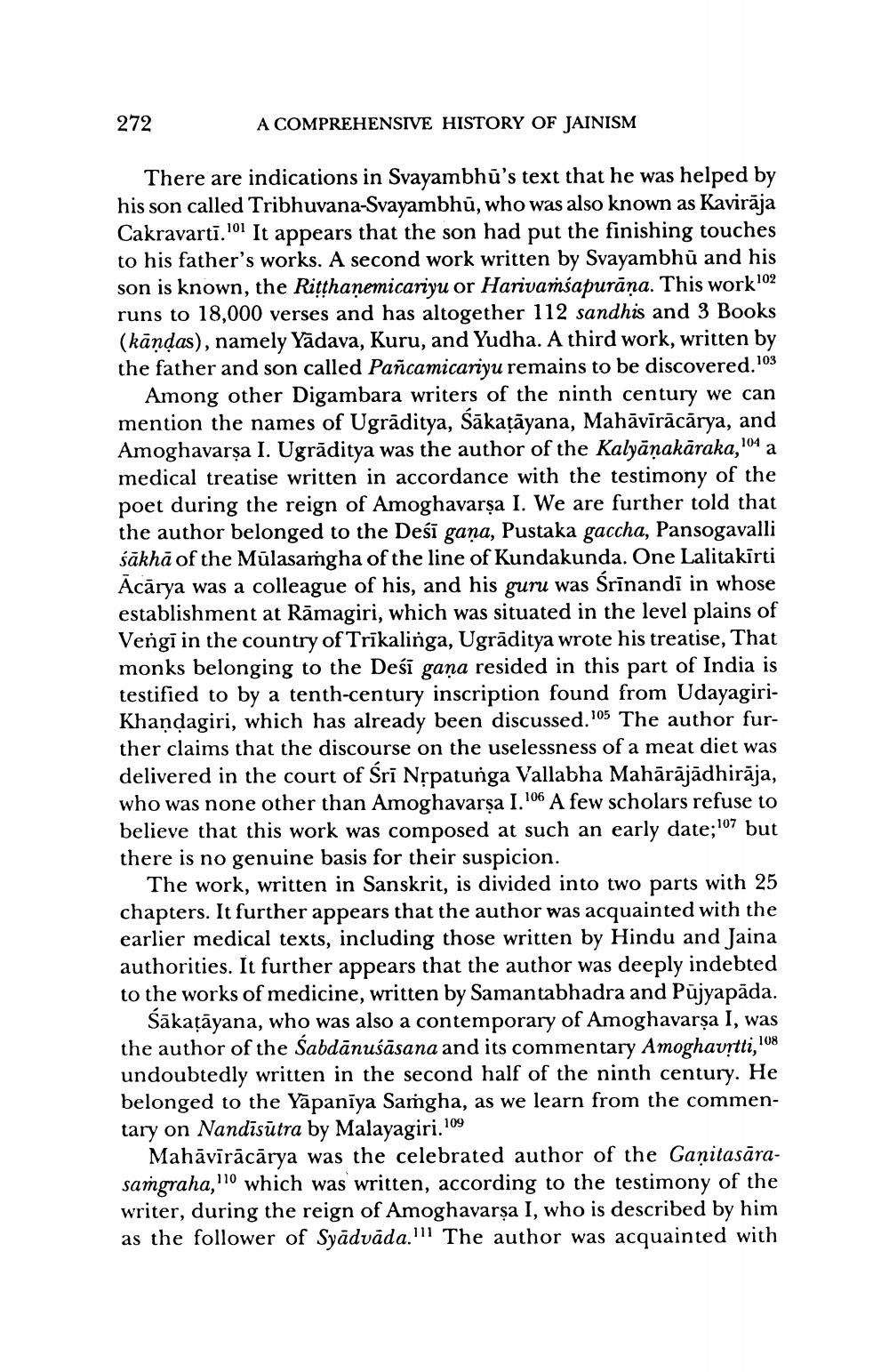________________
272
A COMPREHENSIVE HISTORY OF JAINISM
There are indications in Svayambhu's text that he was helped by his son called Tribhuvana-Svayambhū, who was also known as Kaviraja Cakravarti.101 It appears that the son had put the finishing touches to his father's works. A second work written by Svayambhu and his son is known, the Ritthanemicariyu or Harivamsapurāna. This work02 runs to 18,000 verses and has altogether 112 sandhis and 3 Books (kāndas), namely Yädava, Kuru, and Yudha. A third work, written by the father and son called Pañcamicariyu remains to be discovered. 103
Among other Digambara writers of the ninth century we can mention the names of Ugrāditya, Sākațāyana, Mahāvīrācārya, and Amoghavarșa I. Ugrāditya was the author of the Kalyāņakāraka,104 a medical treatise written in accordance with the testimony of the poet during the reign of Amoghavarșa I. We are further told that the author belonged to the Deśī gana, Pustaka gaccha, Pansogavalli sākhā of the Mūlasamgha of the line of Kundakunda. One Lalitakirti Acārya was a colleague of his, and his guru was Srīnandi in whose establishment at Rāmagiri, which was situated in the level plains of Vengi in the country of Trikalinga, Ugrāditya wrote his treatise, That monks belonging to the Deśī gana resided in this part of India is testified to by a tenth-century inscription found from UdayagiriKhaņdagiri, which has already been discussed.105 The author further claims that the discourse on the uselessness of a meat diet was delivered in the court of Sri Nrpatunga Vallabha Mahārājādhirāja, who was none other than Amoghavarsa 1.106 A few scholars refuse to believe that this work was composed at such an early date;107 but there is no genuine basis for their suspicion.
The work, written in Sanskrit, is divided into two parts with 25 chapters. It further appears that the author was acquainted with the earlier medical texts, including those written by Hindu and Jaina authorities. It further appears that the author was deeply indebted to the works of medicine, written by Samantabhadra and Pujyapäda.
Sākațāyana, who was also a contemporary of Amoghavarșa I, was the author of the Sabdānusāsana and its commentary Amoghavrtti, os undoubtedly written in the second half of the ninth century. He belonged to the Yāpaniya Samgha, as we learn from the commentary on Nandīsūtra by Malayagiri.109
Mahāvīrācārya was the celebrated author of the Ganitasarasamgraha,'' which was written, according to the testimony of the writer, during the reign of Amoghavarsa I, who is described by him as the follower of Syädväda." The author was acquainted with




